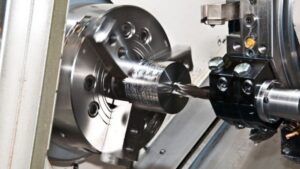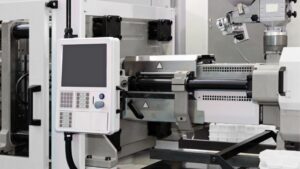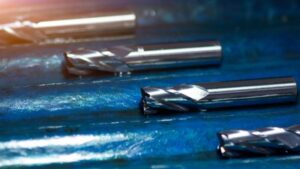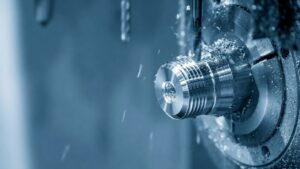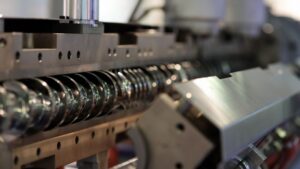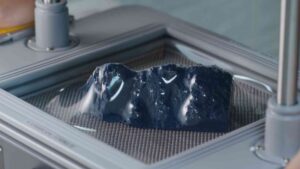Injection molding is a widely used manufacturing process that enables the production of complex plastic parts. Understanding the costs involved in injection molding is essential for manufacturers to make informed decisions about choosing the proper process and partners. Injection mold costs can range from $100 for a 3D-printed mold to over $100,000 for a complex multi-cavity steel mold.
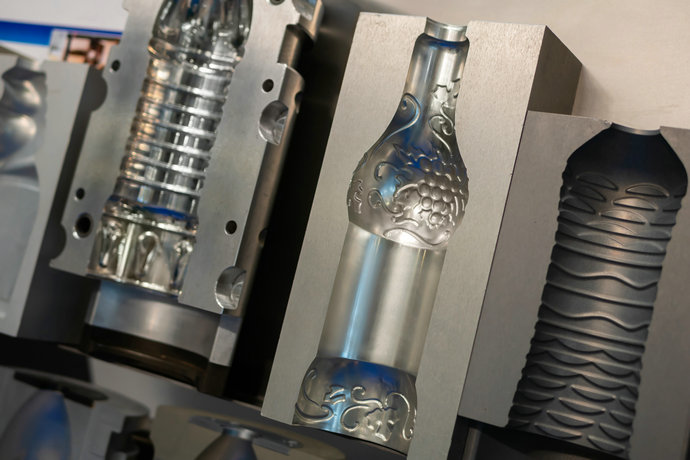
Various factors, such as material selection, part complexity, and production volumes, impact the injection molding cost and the manufacturing process. In addition, the location and outsourcing decisions can also affect these costs.
Key Takeaways
- Injection mold costs depend on factors such as material, part complexity, and production volume.
- Tooling and part costs, production rates, and cycle times significantly determine injection molding costs.
- Evaluating and estimating costs is crucial for manufacturers to make informed decisions about quality, outsourcing, and location.
Overview of Materials and Their Impact
In the injection molding process, the choice of material used significantly impacts the overall cost of your project. A wide variety of plastic materials are available, and each one offers unique properties and costs.
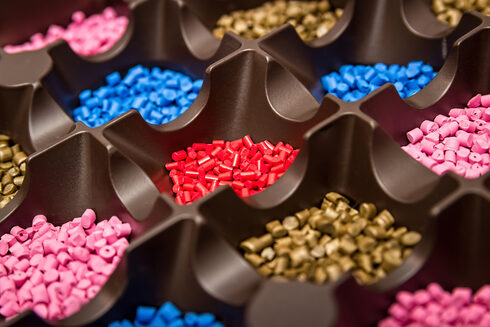
Polyethylene (PE), Polypropylene (PP), and Polystyrene (PS) are among the most common types of plastic materials used in injection molding. These materials often offer a favorable balance between cost and performance, making them popular choices for a broad range of applications.
Material cost is determined by the type of material selected and the market price of raw plastic materials. It’s crucial to understand that plastic materials can fluctuate, affecting the final cost of your injection-molded parts.
When considering the most suitable plastic material for your project, it’s essential to consider each material’s mechanical, thermal, and chemical resistance properties. Additionally, it would be best if you also considered the cosmetic appearance and ease of processing.
While PE, PP, and PS are common choices, other materials like polycarbonate (PC) might be more suitable for specific applications with unique requirements. In any case, selecting the appropriate material type for your project is vital, as it will directly impact the performance, durability, and cost of your injection-molded parts.
Besides the base raw plastic material costs, consider using various additives that can improve specific properties of the material. Additives can enhance durability, UV resistance, or flame retardance, among other features.
However, additives can also increase the overall cost of materials, making it essential to balance performance expectations with cost management carefully.
In summary, when planning your injection molding project, carefully consider:
- The choice of plastic material and its properties
- The market price of raw plastic materials cost
- The appropriate use of additives for improved performance
- The balance between material performance and cost
By understanding the factors that impact the cost of materials in injection molding, you can make informed decisions that will lead to better outcomes for your project without sacrificing quality or breaking your budget.
Cost Factors in Injection Molding
When trying to understand injection molding costs, several factors come into play that can significantly impact the overall expenses. These factors can help you make informed decisions about your injection molding projects and better manage your budget.
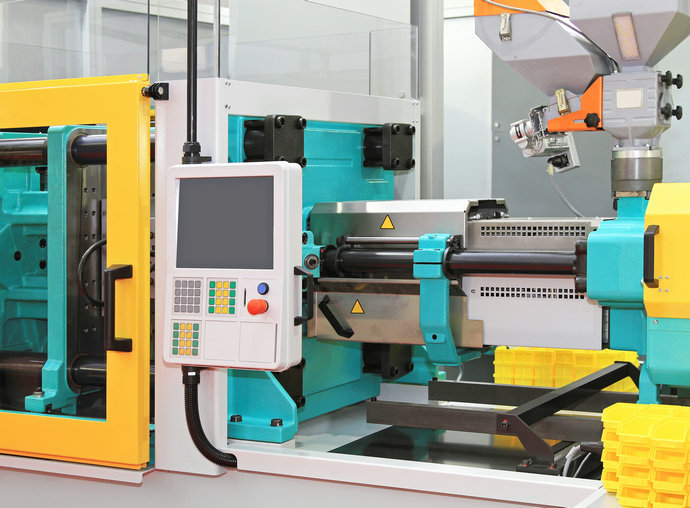
- Complexity and size of the mold: The more complex and larger the mold, the higher the cost. Simple designs with fewer features typically require less labor, materials, and fabricating time, reducing costs. On the other hand, intricate designs with undercuts or advanced surface finishes can increase mold costs substantially.
- Material selection: The material chosen for your mold and parts impacts costs. For example, the price of steel usually plays a significant role in determining the cost of the mold. Additionally, different plastic materials have varying prices, affecting production costs.
- Production volume: The number of parts required is another critical consideration in injection molding cost. Large production runs can lower the per-unit cost, as economies of scale come into play. Small-scale production runs tend to have higher per-unit costs, as the initial setup expenses are spread across fewer units.
- Labor costs: The labor involved in setting up and operating the injection molding process is essential in determining the overall project cost. Higher labor rates typically translate to higher production costs.
- Shipping costs: Depending on the location of your injection molding service provider, shipping the final products to the end destination may add additional expenses to your project. Factors such as distance, shipping method, and shipment size can contribute to increased shipping costs.
By being aware of these cost factors, you can make strategic decisions about your injection molding projects to minimize expenses while still achieving your desired outcomes. Assessing the complexity of your mold design, choosing materials wisely, and considering production volumes can all help you better manage your injection molding costs.
Quantity, Cycle Time, and Production Rates
When planning your injection molding project, understanding the relationship between quantity, cycle time, and production rates is crucial in optimizing your production process. Let’s delve into how these factors influence one another and affect the overall cost of your project.
Quantity refers to the number of parts you need to produce. In injection molding, a higher production quantity typically leads to a lower cost per part. This is because the initial tooling costs are spread across more units, allowing economies of scale to come into play. Additionally, large production volumes minimize the effects of setup costs and enable manufacturers to achieve better material utilization.
It takes time to complete one production cycle, from injecting the molten plastic into the mold to ejecting the finished part. Factors such as part complexity, material properties, and mold design can influence cycle time. To reduce the injection molding cycle time, consider simplifying the part design or optimizing the cooling time for the plastic material.
In turn, the production rate is directly related to the cycle time and determines the number of parts produced per hour. A high production rate means more parts are produced in less time, increasing efficiency and reducing cost. Some strategies to increase the production rate include:
- Utilizing multi-cavity molds: By producing multiple parts per cycle, multi-cavity molds can significantly boost production rates and reduce costs per part.
- Selecting efficient materials: Some materials have faster cooling times and improved flow properties, allowing for shorter cycle times and higher production rates.
- Streamlining mold design: You can reduce cycle time and increase production rates by optimizing mold design and eliminating undercuts or unnecessary features.
A clear understanding of the interplay between quantity, cycle time, and production rates enables you to optimize your injection molding process and balance cost, quality, and efficiency. Remember that each project comes with unique requirements and considerations, so working closely with your manufacturer is crucial to finding the most suitable solution.
Evaluation and Estimation of Costs
Evaluating and estimating injection molding costs can be a complex process, as there are various factors to consider. To get a clear understanding, let’s break down these factors affecting the overall costs.
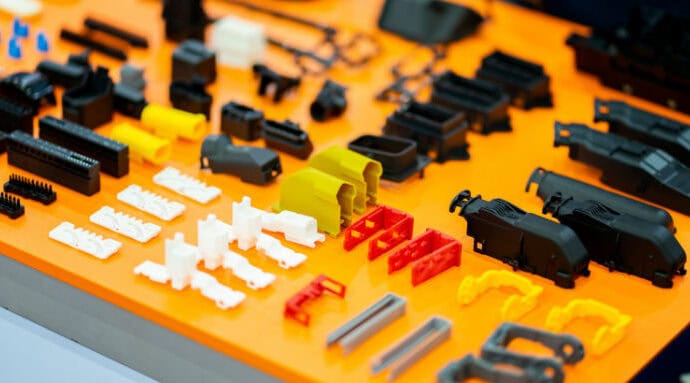
- Part Costs: These costs are determined by the complexity of the part being molded, its geometry, and its size. Complex parts with intricate features may require more sophisticated tooling and longer cycle times, resulting in higher costs. It would be best if you considered these variables when evaluating the cost of a specific part.
- Tooling Costs: The cost of creating the injection mold tooling can be a significant expense, usually including the design, manufacturing, and testing of the mold. High-quality tools are generally more expensive but can provide better part accuracy and longer mold life. Consider the complexity and materials used for your mold tooling when estimating costs.
- Materials Costs: Choosing the suitable material for your injection-molded part can substantially impact your overall costs. Understanding material costs and trade-offs between plastics is essential when evaluating the suitable material for your needs. Consider factors like material strength, temperature resistance, and colorfastness when selecting.
- Production Volume: The number of parts produced in a single run can significantly affect your injection molding costs. Due to economies of scale, large production volumes often result in lower unit costs. However, smaller runs can be more cost-effective for prototypes or limited-production parts. Keep this in mind when planning your production schedule.
To generate a reliable injection molding cost estimate, consider using an injection molding cost estimator, which takes into account all of the details mentioned above. These tools can help you quickly and accurately determine your projected costs, making informed decisions about your manufacturing processes.
Final Thoughts on Quality, Outsourcing, and Location
Several factors play a crucial role in producing high-quality plastic injection molded parts, including the choice to outsource, location, and material selections such as polish and UV stabilizers.
Outsourcing injection molding can save costs, improve efficiency, and let you focus on core competencies. By partnering with a knowledgeable and experienced manufacturer, you ensure that your end products meet the desired quality standards.
The location of your chosen manufacturer is an important consideration, primarily in terms of logistics, shipping, and regulations. Ensure that you select a suitable location for accessible communication and smooth operations.
Remember that different regions might have varying regulations governing the manufacturing process, and you should be aware of those that apply to your specific project.
High-quality parts often require specialized materials and treatments such as polish and UV stabilizers. Selecting the appropriate materials and finishes can significantly impact your molded parts’ final appearance and functionality. A skilled injection molding manufacturer can guide you through these choices to achieve the desired outcome.
To ensure consistency and quality in your molded parts, monitoring and controlling the molten material used during the injection process is crucial. Your molding partner should have the expertise and infrastructure to manage these intricacies.
In conclusion, paying close attention to these factors will help you achieve optimal quality in your plastic injection molded parts while maximizing efficiency and cost-effectiveness through outsourcing and choosing the correct location.
Frequently Asked Questions
1. How is the cost of an injection molding machine determined?
The cost of an injection molding machine depends on several factors, such as the machine’s size, type, and features. The price can vary greatly, from a few thousand dollars for a small benchtop machine to over a million dollars for a large, high-speed production machine.
Additionally, factors like materials, labor costs, and location can impact the overall cost of the machine.
2. What factors influence the cost per unit for injection molding?
Various factors influence the cost per unit for injection molding. These include part design complexity, raw material costs, tooling costs, and production volume.
For high-volume production runs, the cost per unit may decrease due to reduced tooling costs and more significant economies of scale. Alternatively, low-volume runs may result in higher costs per unit due to a lack of scalability in the manufacturing process.
3. How do you estimate the hourly cost of injection molding machines?
To estimate the hourly cost of an injection molding machine, you need to consider factors such as machine size, labor rates, material costs, and energy consumption. Begin by calculating the machine’s operating costs, including labor, material, and energy costs. Then, divide this by the machine’s output rate to get the cost per part. Finally, divide the cost per part by the number of parts produced per hour to obtain the hourly rate.
4. What are some affordable options for injection molding?
Affordable options for injection molding include:
- Outsourcing to low-cost countries.
- Using 3D-printed molds for low-volume production.
- Opting for used or refurbished injection molding machines.
Adjusting the part’s design to reduce complexity or material usage can also help lower overall production costs.
5. How do mold design and complexity affect its cost?
Mold design and complexity significantly impact the cost of injection molding tooling. Complex molds with multiple cavities, intricate features, and tight tolerances usually require more time, expertise, and advanced machinery to produce, resulting in higher costs.
On the other hand, simpler mold designs with fewer cavities and less intricate features are typically more cost-effective and quicker to manufacture.
6. What are the cost differences between plastic and metal injection molding?
Plastic injection molding tends to be less expensive than metal injection molding. Plastic materials are generally more affordable than metals, and plastic molds are often simpler and less costly to produce.
However, metal injection molding can be more cost-effective for specific applications, especially those that require metal materials’ strength, durability, or thermal properties. The cost differences will ultimately depend on the project’s requirements and production volumes.
Use Our Services Today
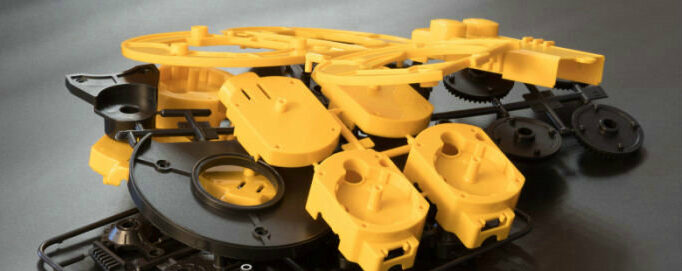
Our vast resources and experience allows us provide the best deals for plastic injection molded parts. You can order in bulk by sending us a message via the customer contact form on our website.
